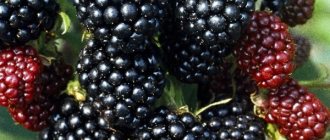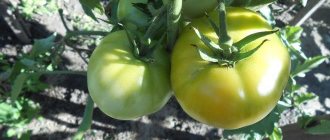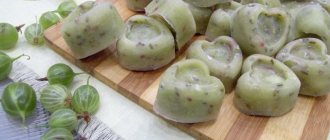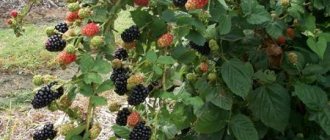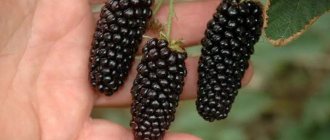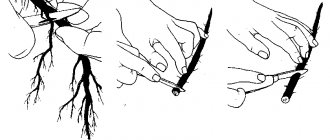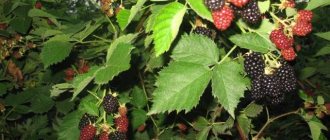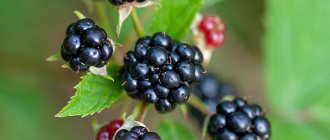Description of the Black Satin variety
In the description of the Black Satin blackberry variety, both positive and negative characteristics are highlighted. This is a perennial shrub with powerful thornless shoots, up to 6-7 meters high. Initially, growth occurs in the vertical direction, but when it passes the 1.5 meter mark, it moves into the horizontal plane, acquiring a creeping character.
Every year the bushes actively grow, but they are not capable of producing root shoots. The leaves are trifoliate, rich green in color. The inflorescences are initially light lilac in color, then become pure white. The flowering period falls from mid-May to late June.
The berries are rounded and elongated, not particularly large, weighing up to 6-8 grams and collected in clusters, 13-16 pieces each. At the stage of technical ripeness, they taste sweet and sour; when fully ripe, they become sweeter and acquire a black glossy sheen. But you cannot delay the collection, as the fruits lose their original properties and deteriorate.
Perennial shrub with thornless shoots
Fruiting in the Black Satin variety occurs much earlier than in other late varieties, such as Thornless - late July - early August. Lasts until the end of September. High yields are observed already in the second year after planting.
Further care for blackberries Black Satin
Further care for this shrub consists of constantly shaping the bushes and solving problems that arise due to the excessive thickness of the shoots and their inability to bend.
Photo of blackberry garter Black satin
Growing shoots must be tied to trellises or other supports. They grow too long. And if you don’t tie them up, they first grow upward, and then lie down on the ground, grow in a horizontal position and begin to take root. If you don’t trim excess shoots in time and don’t do gartering, then over the summer one bush can turn into thickets that will be difficult to put in order.
When the stems grow 35 cm in height, they are bent to the ground and secured with special staples. They begin tying Black Satin blackberry stems to the trellises when the length of the shoots reaches 1.1-1.2 m.
Photo of blackberry garter pattern
This variety of blackberry requires regular and fairly abundant watering, especially during the period of active flowering and berry formation.
It is also necessary to harrow the tree trunks after the shoots are tied, after picking ripe berries and before covering the bushes for the winter.
Photo of bending and securing blackberries to the ground
Blackberry Black satin - shrub pruning
Black satin blackberry varieties are pruned regularly throughout the season.
On each bush, no more than 6 shoots from last year are left, on which fruits will form. All side shoots are constantly shortened by 0.4-0.45 m, all weak and too thin branches are completely removed.
Photo of a diagram for pruning blackberries when planting
All fruit-bearing blackberry shoots are cut off completely at the onset of autumn.
In the spring, no more than 6 best shoots are left on each blackberry bush, the rest are cut out. Broken, frozen or dried lashes are also subject to pruning.
During the summer, it is recommended to remove some of the foliage that shades the ripening berries.
In the first year, all buds that form on Black Satin blackberry bushes are removed.
How to feed Black Satin blackberries
In the first year, young bushes are not fertilized, since all the necessary fertilizers were applied during their planting.
Photo of preparing fertilizing for blackberries
Next season, you need to feed Black Satin blackberries according to the following scheme:
- in the snow or immediately after its intensive melting, fertilizers containing a large amount of nitrogen are applied to the trunk circles of bushes;
- when the first buds appear on the shoots, carry out a second feeding with complex mineral fertilizer;
- then during the summer, once every 25-30 days, a solution of cow manure diluted with water in a ratio of 1:10 or greenfinch diluted with water in a ratio of 1:4 is added to the tree trunk circles (a glass of wood ash is added to the solution);
- in August - September, Black Satin blackberry plants need to be fed with fertilizers containing phosphorus and potassium;
- You can also carry out a couple of leaf feedings during the season. As such fertilizing, you can use a solution of drugs such as Humate, Epin, Zircon.
Flaws
The obvious disadvantages of this variety include:
- low frost resistance;
- extended and scattered period of berry ripening;
- stiff and brittle shoots;
- ripe fruits are too soft and do not tolerate long-term transportation;
- the crop is poorly stored and requires quick processing.
Berries are best consumed fresh or made from them: compotes, preserves, jams, juice, wine. It is recommended to freeze, then the beneficial properties are preserved. The peculiarity of the variety is that the peak yield occurs in the first years of growth - the berries are large, juicy and delicate in taste. Gradually they become smaller and denser, which facilitates transportation and extends shelf life.
Diseases and pests
Basically, this variety is resistant to major blackberry diseases. The exception is gray rot, which has already been mentioned. Its causative agent, botrytis gray, is a mold fungus that is used in winemaking.
It can affect the plant already in the flowering phase. If the weather is cold and rainy, entire inflorescences may be damaged. At later stages of the growing season, botrytis settles on ovaries and fruits. A berry that is sick with gray rot looks as if it is rotten and covered with gray fluff. Therefore, it is better to take preventive measures in advance than to lose the harvest.
- The lower branches should not lie on the ground. Botrytis spores are stored in moist soil.
- The bush should not be allowed to thicken. All vegetative parts of the plant must be ventilated.
- Pick ripe berries and remove rotten ones in a timely manner. Having discovered a diseased shoot, cut it out and burn it.
- In the spring, before flowering begins, spray the bush with Bordeaux mixture (3% solution).
Among the pests for Black Satin blackberries, the blackberry mite is dangerous. This tiny insect can halve the berry harvest. Unlike many other pests, the mite does not hibernate in the soil or under the bark. It settles directly in the buds of blackberries, and in the spring it migrates to inflorescences and berries. Fruits affected by this pest do not ripen, remaining reddish.
You can fight this scourge with the drug “Tiovit Jet”, which is usually used to process grapes. Spraying should be done before the buds open.
Twig with juicy berries Black Satin
Beneficial features
Growing blackberries on your own plot means providing yourself with vitamins and microelements not only for the whole summer, but also for future use. The berries are richer in ascorbic acid than even oranges. Due to this, it has anti-inflammatory, regenerating and immunostimulating properties.
Indicated for use in diabetes mellitus, neuroses, pathologies of the liver and cardiovascular system, and also normalizes the functioning of the gastrointestinal tract. Microelements in the composition have a beneficial effect on the functioning of all internal organs. Fruits are a valuable source of antioxidants, which protects against premature aging.
Decoctions are prepared from the leaves and berries, which are useful for metabolic disorders. People predisposed to allergies and with high stomach acidity should be careful when consuming blackberries. In such cases, it is recommended to focus on fresh fruit drinks and juices.
Landing Features
To plant a crop, you need to choose the right site. It is important to purchase high-quality planting material.
The plant can be planted in early spring or late autumn. In the first case, this is done before the buds open. Autumn planting requires warming young bushes for the winter. Otherwise, weak shoots will freeze.
For planting, you need to choose the right site. This will ensure the full development of the bush. It is recommended to plant the plant in sunny beds that are protected from the wind. The culture can tolerate slight partial shade. However, it is permissible to choose such places only in the south.
Important! In northern regions, with a lack of sunlight, there is a risk of problems with wood ripening. This will negatively affect the wintering of the plant and the ripening of the crop.
To grow crops, you should choose black soil with an average level of moisture. It is not recommended to plant the plant in salty or fresh soil. Also, there should not be a lot of lime in the soil. Otherwise, the crop may suffer from chlorosis. This violation is accompanied by the appearance of yellow spots on the foliage.
Planting and care
To get a good harvest, follow the simplest agrotechnical recommendations for cultivation and care. The culture in this regard is unpretentious, successfully taking root both in the sun and in the shade. But for the fastest ripening of berries, it is better to select an open, illuminated area, with protection from through wind blowing.
It is preferable to choose fertile and loose soil, moderately moist. Dampness leads to rotting of the roots. But blackberries can withstand drought, which is due to their deeply growing root system. Soil with excess limestone and salt is not suitable, which stimulates the development of chlorosis (yellowing of leaves and shoots).
The best planting period for areas of central Russia and Siberia is the beginning of spring, before the buds swell. In the southern regions it is permissible to plant in late autumn, but then shelter for the winter is required. Seedlings can be bought in a specialized store and stored in a cool place until planting, at a temperature not exceeding 10-12 C.
The planting process includes the following steps:
- The seedlings are pre-sorted, discarding injured and diseased ones.
- Clear the area of debris and residual roots and previously growing plants.
- Dig planting holes up to half a meter deep. Maintain a distance of 1.5-2 meters between them.
- Each is generously moisturized.
- The seedling is captured along with a lump of earth and placed in the center of the hole. Gently straighten the roots and sprinkle with soil up to the root collar, leaving it slightly open.
- The root zone is mulched with peat or sawdust.
- Young shoots are immediately cut to a height of 35-40 cm, leaving 3-4 active buds.
It is not advisable to feed during planting so that the plant does not immediately begin to actively grow. This will weaken it before the winter cold. In addition, organic matter is an ideal breeding ground for various pests.
Further care
Some time after planting, the bushes are tied up. The vine can randomly stretch up to five meters in length and this complicates its shelter for the winter. It is recommended to immediately impart a horizontal direction in growth. In the future, this will be problematic due to poor flexibility and excessive bushiness. The slightest mechanical impact can cause a break.
To do this, shoots 35-40 cm tall are bent to the ground with a spear and further development occurs horizontally. When the length reaches 1-1.2 meters, the lock is removed. Next spring, the whip is lifted onto a trellis and tied in an arc.
From the second year, plantings need additional feeding.
For this use:
- urea;
- nitrogenous fertilizers;
- ammonium nitrate.
At least once a month they loosen and weed the soil near the bushes. Blackberries are moisture-loving and need regular watering, but without stagnation. Pour 5-8 liters under each bush, as needed.
The crop has strong immunity and rarely gets sick, but is susceptible to blackberry mites. Ripe berries suffer more in this regard: they become covered with a white coating. As a preventive measure, they are systematically sprayed with horsetail infusion.
Landing rules
Planting Black Satin blackberries is not much different from other varieties. Unless on private farms it is recommended to plant bushes further away from each other, and only if possible.
Recommended timing
In most regions of Russia, it is recommended to plant Black Satin blackberries in the spring. This will allow the bush to take root and grow stronger over the season before the onset of frost. In the south, the variety is planted in the fall, since when planted in spring, blackberries may suffer from the rapid onset of heat.
Choosing a suitable location
The best place for planting blackberries will be sunny areas, sheltered from the wind. The Black Satin variety can tolerate slight shading, but it is only permissible in the southern regions. In the north, with a lack of sunlight, the wood will not ripen, therefore, it will not overwinter well, and the percentage of berries that do not have time to ripen will be much higher.
The groundwater level is no closer than 1.0-1.5 m to the surface.
You cannot plant Black Satin next to raspberries, other berry bushes, strawberries and nightshade crops. They can infect blackberries with diseases that, if placed correctly, you would not even think about. In fact, the recommended distance is 50 m, which is difficult to achieve in small areas. Just plant the crops further apart.
Soil preparation
The Black Satin variety is not very demanding on soil, but before planting the soil must be improved by adding a bucket of organic matter, 120-150 g of phosphorus and 40-50 g of potassium fertilizers to each planting hole.
Important! All fertilizers for blackberries should not contain chlorine.
Blackberries grow worst on sandstones, to which you need to add more organic matter, and heavy loams (improved with sand). The soil for the crop should be slightly acidic. High-moor (red) peat is added to alkaline and neutral soils. Excessive acidity of the soil is dampened with lime.
Selection and preparation of seedlings
The future health of blackberries and the harvest depend on the choice of planting material. The seedling must be strong, with smooth, intact bark and a well-developed root system. The Black Satin blackberry variety is not that rare, but it is better to buy it in nurseries or reliable retail chains.
The container plant is watered the day before planting, and the exposed root is soaked in water.
Algorithm and landing scheme
A distance of 2.5-3.0 m is left between Black Satin blackberry bushes. In industrial plantings, compaction of the planting to 1.5-2.0 m is allowed, but in this case, fertilizing must be intensive, since the feeding area is reduced.
Important! For the Black Satin variety, a distance between bushes of 1.0-1.2 m is considered critical.
The planting hole is dug in advance, filled 2/3 with a nutrient mixture and filled with water. Its standard size is 50x50x50 cm. After 2 weeks you can start planting:
- A mound is formed in the center, around which the roots are spread.
- The hole is filled with a nutrient mixture so as to deepen the root collar by 1.5-2 cm.
- The soil is compacted, the blackberries are watered, spending at least 10 liters per bush.
- The earth is mulched.
- The seedling is cut to 15-20 cm.
Trimming
Equally important is correct and systematic pruning, which affects the formation of bushes. Through simple manipulations it is possible to create spectacular garden compositions due to the high decorative properties of the crop.
Long branches grow directly from the soil and the life cycle of one is from 2 to 5 years. In this connection, shoots of the first and second years of life are distinguished. Only second-year trees bear fruit, so the goal of pruning the vines will be to obtain the most positive result over a two-year period.
Procedure steps:
- First-year plants are pruned in the summer, before flowering. Shoots more than one and a half meters long are shortened by 10-15 cm with pruning shears.
- In the second year of life (early spring), the lateral shoots are cut off by 30-40 centimeters. This will ensure free access of light and air to the ripening berries.
After fruiting, old shoots are removed under the base, and young shoots are thinned out. This makes it easier to develop new ones. Then the harvest for the next season will be abundant.
Rules of care
After planting, the seedlings must be regularly loosened and weeded to get rid of weeds. These procedures should be carried out throughout the entire life cycle of the plant, as well as the formation of a bush with pruning of old, dry and painful stems. Young bushes are tied up, directing the shoots upward. More often they use wooden supports with wire stretched in several rows. The shoots are distributed in such a way that there are gaps of 10–15 cm between them.
From the 2nd year you can start applying fertilizers. For 1 bush add 5–6 kg of humus, 30 g of ammonium nitrate, 30 g of potassium fertilizers and 100 g of superphosphate. This composition will create a layer that protects the soil from drying out and replenishes nutrient reserves. Humus must be added to the soil once every 3 years. During spring development, the plant needs mineral supplements, which promote the growth and good development of fruits. The soil can be fertilized with “Master” and “Kemira” preparations, and “Plantafol” is used for foliar feeding.
Although blackberries are drought tolerant, they should be watered regularly, otherwise the berries will be small and not as juicy. Watering is carried out 2 times a week, delivering 2 buckets of water to each bush. It is better to do this early in the morning or late in the evening, after the scorching sun has set. During the period of fruit ripening and during dry weather, the number of waterings should be increased to 3 times a week.
Preparing for winter
The roots of Black Satin blackberries can withstand cold, but the tops of the branches are not so winter-hardy and freeze without protection. This negatively affects fruiting in the coming season.
To avoid negative consequences, shortly before the onset of cold weather, the plant is pressed as tightly as possible to the ground, fixed and covered:
- agrofibre;
- roofing felt;
- padding polyester;
- film;
- fallen leaves.
It is important that the berries do not rot and begin to rot, and that when the temperature drops sharply in winter, they do not become covered with ice. Therefore, it is not recommended to use film material and padding polyester for the southern regions.
The root zone is mulched with: peat, compost, dry branches, oak bark, humus. Later they are covered with the first snow that falls. With the warmth of spring, the protection is removed and the soil is thoroughly loosened.
Characteristic
Before you start planting Black Satin blackberries on your plot, you need to learn about all the features of the variety in order to be prepared for all sorts of surprises. The advantages of planting, of course, are much greater, because it was not in vain that a lot of effort was spent on breeding the variety.
- So, the positive characteristics:
- highest yields;
- absence of thorns;
- resistance to diseases and pests;
- drought resistance;
- lack of root shoots;
- low maintenance requirements.
The advantages of the plant include the decorative nature of the plant - it is often used in landscape design to decorate luxurious hedges. It is also worth mentioning the healing properties that all parts of the bush are endowed with. Fruits, leaves, shoots and even roots are used as medicinal raw materials.
The berries contain a large amount of vitamins C, E, groups B and P, as well as acetylsalicylic acid, potassium salts, copper, calcium, phosphorus, adsorbents that remove toxins.
Infusions, decoctions and teas from dried shoots and leaves strengthen the immune system and help fight colds.
- If we talk about the disadvantages, the main ones are the following:
- poor frost resistance;
- the plant is bushy, has powerful shoots that are difficult to bend, which causes problems with laying the bush for the winter;
- poor transportability.
Summer residents who visit the site infrequently may have problems with harvesting, since the berries need to be removed every 3-4 days. And for those who live permanently in the private sector, the variety is highly recommended for planting.
Drought resistance, frost resistance
An adult crop has a deep root system and can easily survive a dry period. The plant does not tolerate frost well, so its cultivation is recommended in regions where the winter temperature does not drop below –12°C.
The crop needs to be insulated for the winter - it is mulched, bent to the ground and covered.
Productivity, fruiting
The flowering of garden shrubs begins at the end of May and lasts for a long period - sometimes the color can be seen simultaneously with the ripened berries. The fruiting period is at the end of July or beginning of August, depending on how warm the summer is or on the growing region. The harvest can be harvested until October.
Did you know? Blackberry variety Black Satin is considered the most fruitful. Research has shown that the average number of berries ripening on one bush is 280, while the Thornfree variety is in second place, producing 180 berries.
Black Satin is a high-yielding fruit crop. From 1 bush aged 4–6 years, an average of 12–15 kg of tasty fruits are harvested, and with proper agricultural technology this figure is up to 25 kg.
Reproduction
Black Satin is transplanted and propagated before flowering or after harvesting. It's better to do this in the spring.
Blackberries can reproduce in several ways:
- seedlings;
- layering;
- seeds;
- not lignified tops;
- petioles.
It is important to propagate by petiole cuttings, which is done in July-August. Select a young shoot with 2-3 live buds and cut it to 20-30 cm in length. Separately, dig a hole and root the plot, covering it halfway with soil.
Another, no less effective option is burying the apical part. A shoot that has not yet had time to harden, at least 30 cm long, is selected, bent and buried next to the mother bush. In the spring, when more than one leaf appears, they are separated and transplanted to another place. In this way, up to 4-5 new plants are obtained.
Reproduction methods
The culture propagates in 3 ways: layering, cuttings and dividing the bush. If you decide to propagate the plant by layering, you need to take care of this in advance. The fact is that blackberry stems bend very poorly, so it is necessary to select still young growing shoots and bend them to the ground as they grow. A long 7-meter branch is difficult to bend - most likely it will break.
The cuttings are placed in trenches 20 cm deep, dug in advance around the bush, and pinned. Laying continues until the beginning of autumn, after which the shoot is sprinkled with earth, watered and mulched. The first rhizomes and shoots will begin to appear in 1.5–2 months. In the spring you can start replanting. This is done before the onset of the growing season - in May and June.
Propagation by cuttings allows you to obtain more seedlings. The material is cut in the fall from the tops of the shoots. The size of the cuttings should be about 40 cm. They are buried in the garden to a depth of 20 cm for preservation (you can place the cuttings in a cool place at a temperature of +2°C). In the spring they are dug up, the cuts are rejuvenated and again immersed in open ground in rows at a distance of 10 cm, covered with earth. Now you need to weed and water the planting, waiting for shoots. When the first bushes appear, the seedlings are carefully dug up and transplanted to a new location.
Read how to grow blackberries from seeds at home.
You can also propagate the plant by dividing the young bush. To do this, in spring or autumn, it is dug up and fragments are cut off, each of which must have 2-3 shoots and at least 1 underground bud. The seedlings are planted in prepared areas.
American pruning
The homeland of blackberries is America, and there people form this variety into a very compact bush. To do this you need:
- in July, pinch off the tops of one-year-old shoots at a height of 1.1 meters, this will stimulate the growth of lateral branches;
- in the spring, before the buds awaken, the lateral growths are normalized: those that grow below forty-five centimeters from the ground are removed, the rest are pruned to forty centimeters;
- in the fall you need to remove the branches that bear fruit.
Do not spare the branches, remove them. They will still not produce any more crops, since they are only capable of doing this for two seasons. In the spring, they will only thicken the bush, suck out a lot of useful substances and contribute to gray rot.
